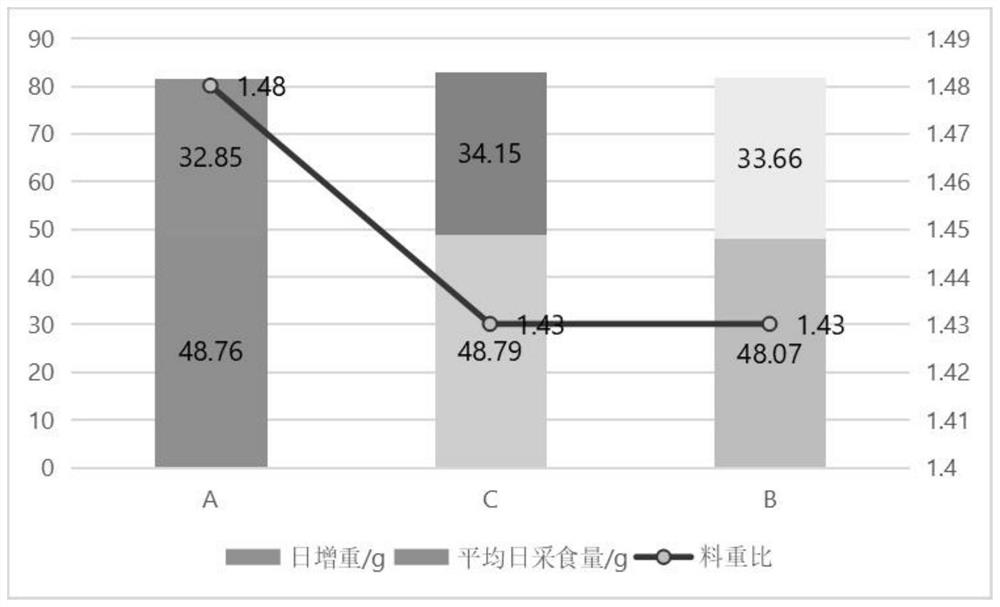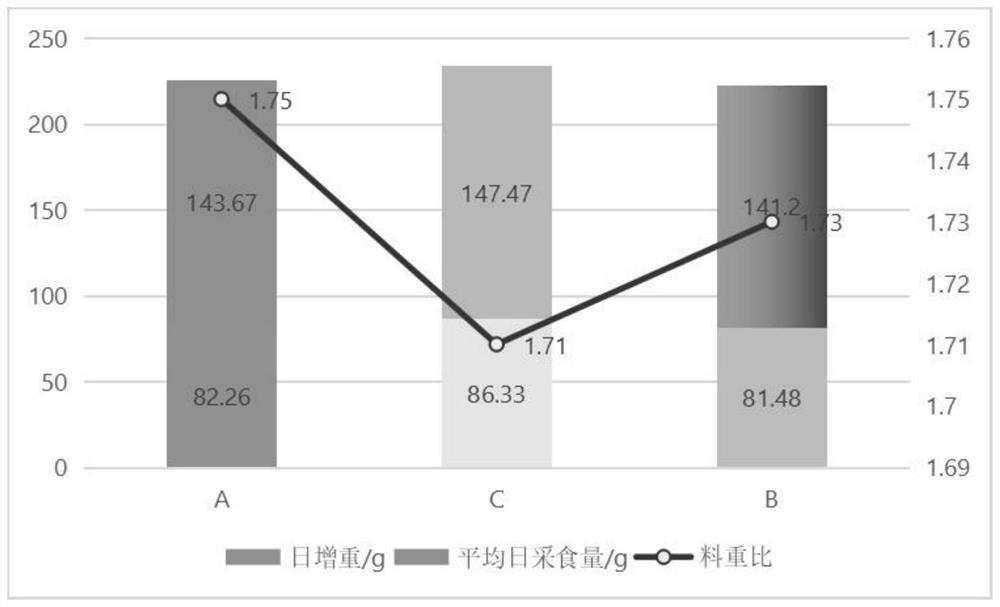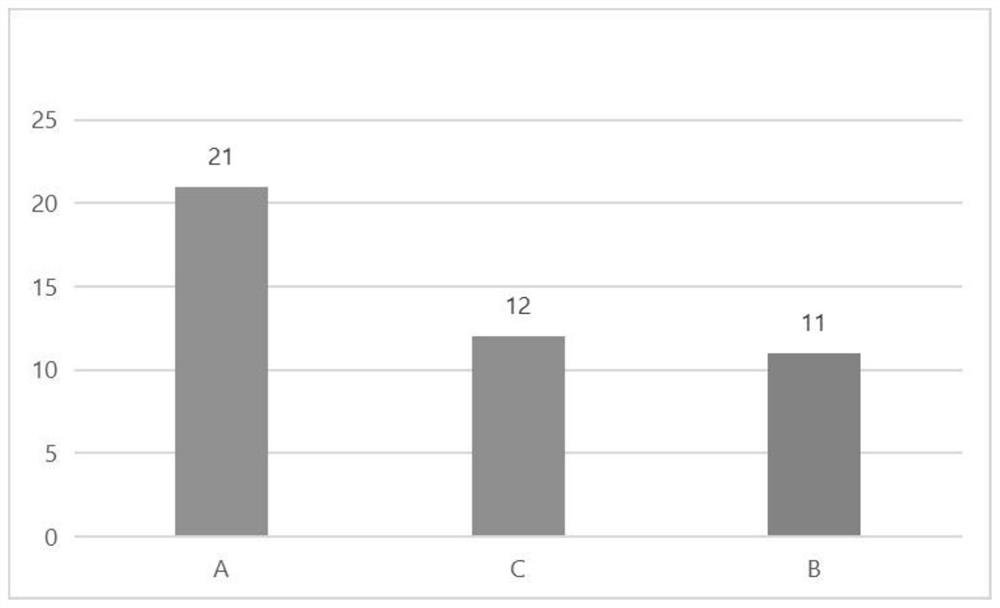Broiler chicken antibiotic-replacement feed composite additive rich in enzyme and bacteria and preparation method thereof
A technology of compound additives and enzymes, applied in the direction of animal feed, animal feed, additional food elements, etc., can solve the problems of declining benefits, raising breeding costs, and increasing disease rates.
- Summary
- Abstract
- Description
- Claims
- Application Information
AI Technical Summary
Problems solved by technology
Method used
Image
Examples
Embodiment 1
[0018] The preparation of embodiment 1 feeding probiotics
[0019] (1) Activation of bacteria
[0020] The probiotics used in the examples of the present invention were purchased from the Microorganism Collection Center, Bacillus subtilis CICC 24675 and Clostridium butyricum CICC 23847.
[0021] The Bacillus subtilis activation medium adopts LB, and the formula is: 0.5% of yeast extract, 1% of tryptone, 1% of sodium chloride, and 2% of agar in solid medium. Bacillus subtilis was inoculated on the plate medium, and cultured at 37° C. for 24 hours to obtain activated strains.
[0022] Clostridium butyricum activation medium adopts enhanced Clostridium medium, the formula is: beef extract 1%, glucose 05%, tryptone 1%, yeast extract powder 0.3%, sodium chloride 0.5%, soluble starch 0.1%, cysteine Amino acid hydrochloride 0.05%, sodium acetate 0.3%, solid medium plus agar 2%. Inoculate Clostridium butyricum on the plate medium and culture anaerobically at 37°C for 12 hours to ob...
Embodiment 2
[0029] The preparation of embodiment 2 feed enzyme preparations
[0030] The heterologous expression host bacteria of the enzyme preparations used in the examples of the present invention were all constructed in this laboratory.
[0031] (1) Preparation of seed solution
[0032] Pick the monoclonal Pichia host bacteria in the ultra-clean workbench and inoculate them in 200mLYEPD medium, with 1% yeast extract, 2% peptone, and 2% glucose, and culture at 30°C and 250rpm for 36-38h, until the wet cell weight reaches 30g / L.
[0033] Batch fermentation of the seeds was carried out in two stages using 50 liter and 500 liter fermenters, respectively. The seeds were inoculated in a 50L fermenter containing 30L sterile fermentation medium at 30°C, 350rpm, and 20% (w / v) ammonia solution was added to adjust the pH to 4.5 for fermentation until the wet cell weight reached OD600>30. In the second stage, the seeds were transferred to a 500-liter fermenter containing 350 liters of sterile...
Embodiment 3
[0039] The preparation of embodiment 3 oligomannan oligosaccharides
[0040] (1) Preparation of hydrolyzate of konjac oligosaccharide
[0041] Take 100kg of pure water, heat it indirectly to 60°C, add β-mannanase to make the enzyme activity in the enzymolysis tank reach 50IU / mL, stir and mix evenly. Weigh 12.5kg of konjac powder, slowly add it into the enzymatic hydrolysis tank, add while stirring, continue to add 12.5kg of konjac powder after 20 minutes; stir and hydrolyze for 1 hour after all the addition, measure the viscosity, reducing sugar and total sugar content. After the reaction, heat up to 80°C and keep it warm for 10 minutes to terminate the enzymatic hydrolysis reaction, cool to 50°C, filter and intercept the crude fiber in the reaction system with a sieve to obtain the crude filtrate of konjac oligosaccharides.
[0042] (2) Centrifugal filtration
[0043] The starch, coarse fiber particles and residues in the oligosaccharide solution were removed by 8000rpm hig...
PUM
 Login to View More
Login to View More Abstract
Description
Claims
Application Information
 Login to View More
Login to View More - R&D
- Intellectual Property
- Life Sciences
- Materials
- Tech Scout
- Unparalleled Data Quality
- Higher Quality Content
- 60% Fewer Hallucinations
Browse by: Latest US Patents, China's latest patents, Technical Efficacy Thesaurus, Application Domain, Technology Topic, Popular Technical Reports.
© 2025 PatSnap. All rights reserved.Legal|Privacy policy|Modern Slavery Act Transparency Statement|Sitemap|About US| Contact US: help@patsnap.com



